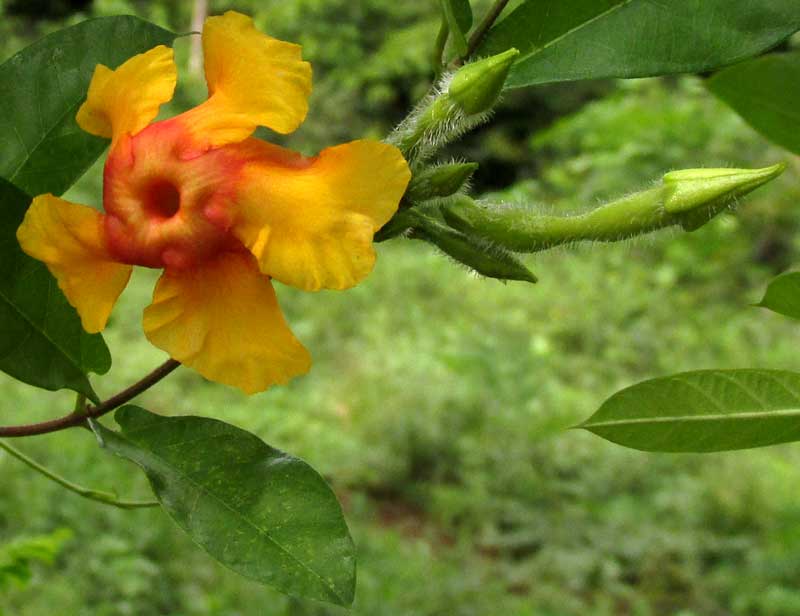Excerpts from Jim Conrad's
Naturalist Newsletter
from the August 30, 2018 Newsletter issued from Rancho Regenesis in the woods ±4kms west of Ek Balam Ruins; elevation ~40m (~130 ft), N~20.876°, W~88.170°; central Yucatán, MÉXICO
MANDEVILLA VINE FLOWERING
It's amazing that after all these years in the Yucatan I can still be wandering along a trail I've traveled many times, and something completely new to me will turn up, and often it's conspicuous and pretty. That's the case with what's shown below:

It was a slender vine with leaves situated opposite one another, and when a leaf was injured it bled milky white latex. Therefore, it just had to be a member of the big Dogbane or Oleander Family, the Apocynaceae, which now embraces species that used to belong to the now-abolished Milkweed Family. Below, a side view of the flower shows a surprising amount of hairiness

A broken-open flower displays not only droplets of white latex oozing from the torn parts but also, at the entrance to the corolla's throat, a cluster of five anthers on very short filaments, assuring that any pollinator leaving the nectar area at the flower's bottom will be carrying pollen to the next flower. That's below:

This is MANDEVILLA SUBSAGITTATA, of which there are few pictures and little information on the Internet, despite the species being widely distributed from central Mexico south through Central America into South America. I find no English name for it, but up North certain species of Mandevilla vines are grown in gardens for their pretty flowers, so just calling it Mandevilla might do.
I read that the species is medicinal, but it's not said for what. In many traditional cultures, plants producing white latex are considered eye medicine because of the belief that plants tell us their uses -- the "Doctrine of Signatures." The white latex is like the opaqueness of certain blind people's eyes, so it must be good for eye diseases, they reason. But many members of the Euphorbia Family, for instance, produce white latex, and that sap often contains powerful alkaloids that can damage eyes.